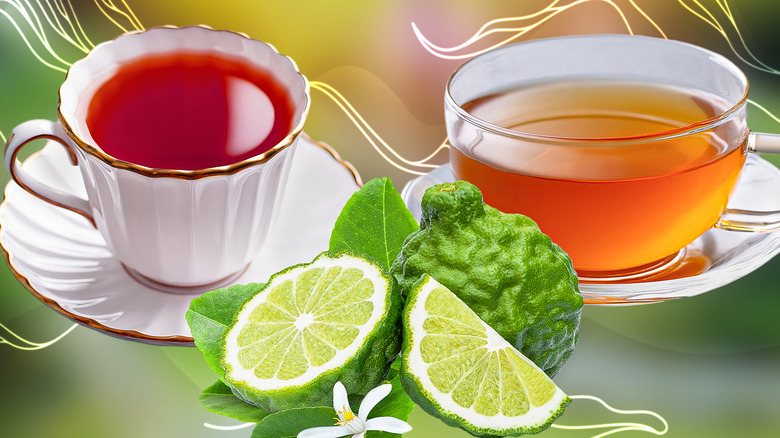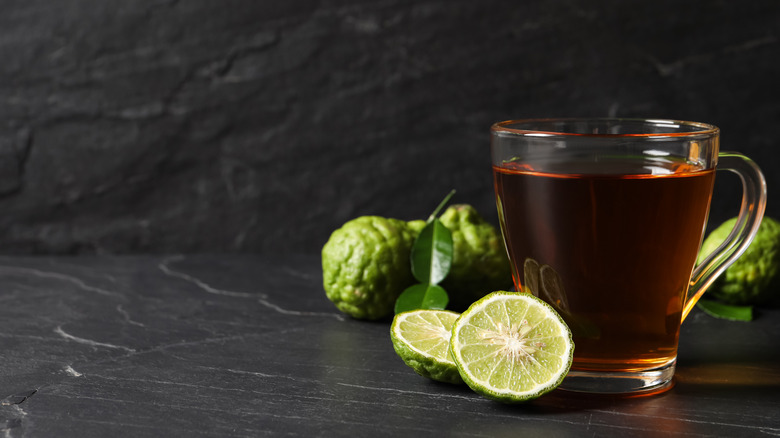The Ingredient That Makes Earl Grey And English Breakfast Tea Different
If you've ever ordered a pot of black tea, it's likely that you received either English Breakfast or Earl Grey tea. These two titans are among the most popular teas in the world, but their similarities mean people frequently mix them up. Only one ingredient separates the two brews, both so inextricable from British culture (even though the nation has grown to prefer coffee): bergamot.
English Breakfast tea contains leaves from the camellia sinensis tea plant, which is native to China and has been used as a medicinal plant in the country for thousands of years. While Earl Grey uses the same leaf, bergamot essential oil is what gives this tea its citrusy flair. On its own, camellia sinensis gives off a slightly malty, warming flavor, giving English Breakfast tea its characteristic heartiness. Thanks to the addition of bergamot, Earl Grey has a spiced, almost lemony kick that is bound to wake you up if the caffeine doesn't.
English Breakfast tea gets its name from, unsurprisingly, its popularity as a breakfast staple. It's alleged that, in the late 19th century, a Scottish tea master named Robert Drysdale created the blend due to demand for a stronger brew ideal for drinking in the morning. Earl Grey, on the other hand, is named for one of the most significant figures in 19th-century British politics: Charles Grey, Second Earl Grey, who served as Prime Minister from 1830 to 1834.
Why bergamot was key to Earl Grey's success
Bergamot may look like a lime, but it's actually a kind of orange that originated in Southeast Asia (although it's primarily grown in Italy these days). Its taste is so powerful that it is too bitter to be eaten as you would a nectarine, so it's not recommended that you keep one in your fruit bowl. This pungent flavor actually works to your advantage when used in tea, however, adding a deeply aromatic kick that is noticeable the second you bring your cup to your lips. You can also find bergamot in some soaps and cleaning solutions, with its strong, fresh scent helping you feel squeaky clean. The bergamot you'll find in tea or soaps isn't usually from the juice itself but from its essential oil, which is extracted from the peel of the fruit using the cold press method.
Earl Grey's key ingredient being bergamot is no accident, and according to several accounts was directly related to Northumberland, where Grey lived. The area has moderately hard water, which without modern water treatment methods would result in an odd taste due to the presence of limescale. This is where bergamot comes in. Its strength overwhelms the lime, leaving you free to enjoy your tea-drinking experience without pursing your lips at an unexpected, unpleasant taste of metal. The drink certainly worked for Grey's hard tea problem, so much so that a legend was born, with the namesake long outliving the man.

